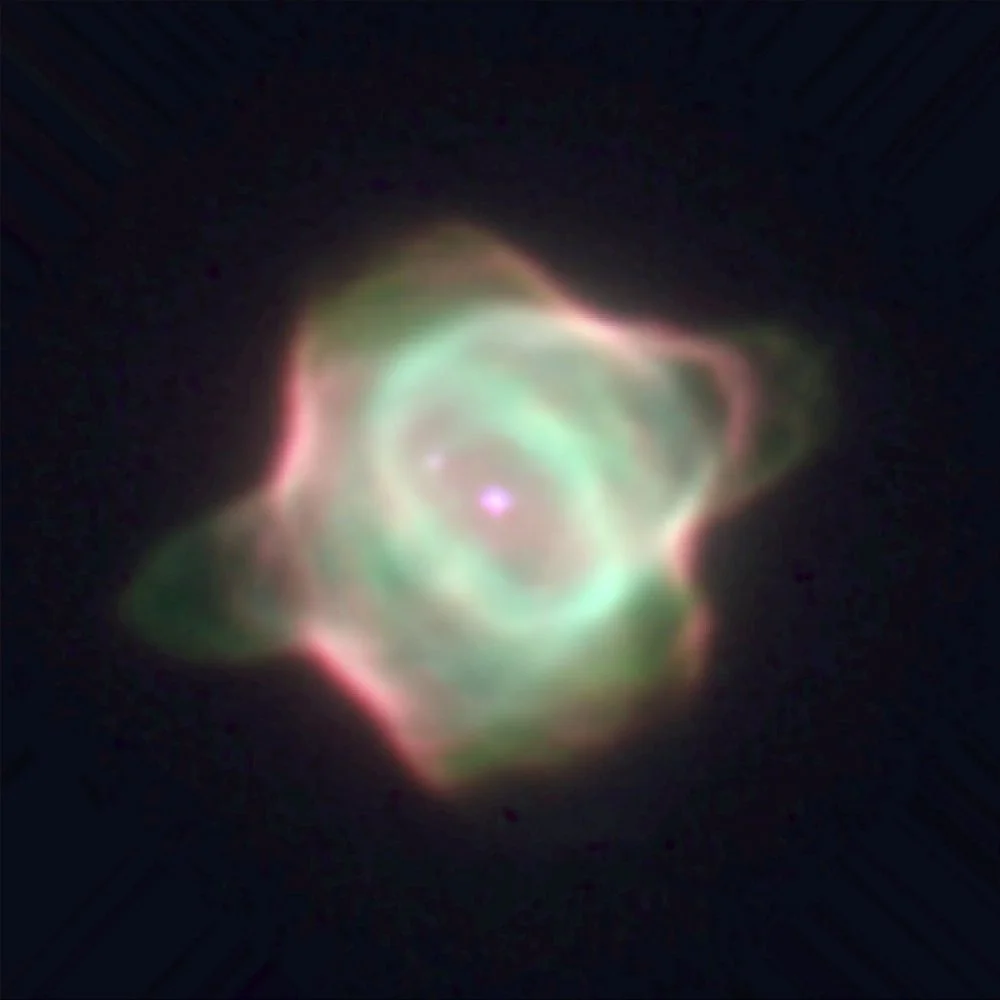The Stingray Nebula, or Henize 1357 (Hen 3-1357), is the youngest planetary nebula known. It is located in Ara constellation.
The nebula lies approximately 18,000 light years from Earth. The nebula’s coordinates are 17h 16m 21.071s (right ascension) and -59°29’23.64” (declination). Its apparent visual magnitude is 10.75.
The nebula was created when a star in its final stages ejected its shell of gas, which now glows in neon light. The expanding gas shell is lit by the star remnant at the core of the nebula. As the nebula continues to drift away from the star, the star’s core heats up and lights the gas.
The Stingray Nebula is considered an ‘infant’ nebula because its central star only heated up sufficiently to make the gases glow within the past 25 years.
It is rare to find such a young nebula because it takes stars in their final stages about a hundred years to transform into visible planetary nebulae, which is a short period of time in a star’s existence. Stars typically live for milions of years.
Before it ejected its shell, the central star was (which is to say, appeared as) an asymptotic giant branch (AGB) B1 type supergiant.

The Stingray Nebula, image: NASA, Matt Bobrowsky, Orbital Sciences Corporation
In 1967, American astronomer and astronaut Karl Gordon Henize classified the star (then known as He 3-1357) as an A or B type H emission line star. In 1971, a pre-planetary nebula was observed, which meant that the star at the centre was an AGB B1 supergiant.
The nebula itself would not be seen for another 20 years.
The Stingray Nebula is not only young, but also only one-tenth the size of a typical planetary nebula. (It is still about 130 times the size of the solar system, and growing.) It was not observed until the 1990s, when the Hubble Space Telescope sent back images that revealed its structure.
Bobrowsky observed it with the Hubble and named the nebula Stingray because its shape resembles that of the stingray fish. The colours of the nebula in the photo are actual colours emitted by oxygen (green), hydrogen (blue), and nitrogen (red).
The central star of the Stingray Nebula, or PNN (planetary nebula nucleus) is a DA white dwarf that has a companion star 0.3 arcseconds away.